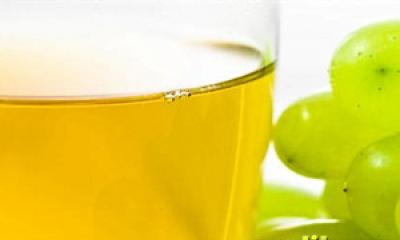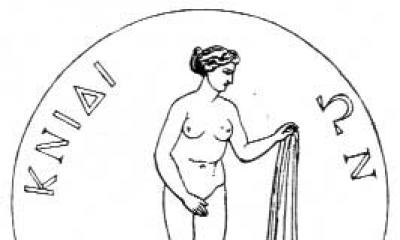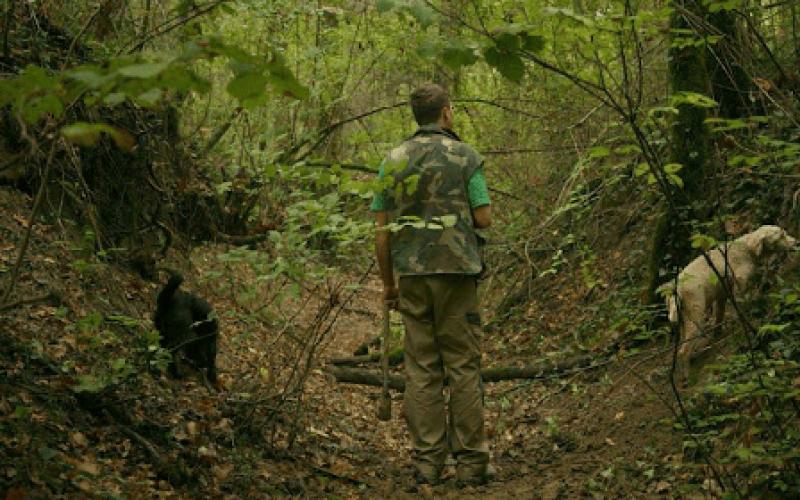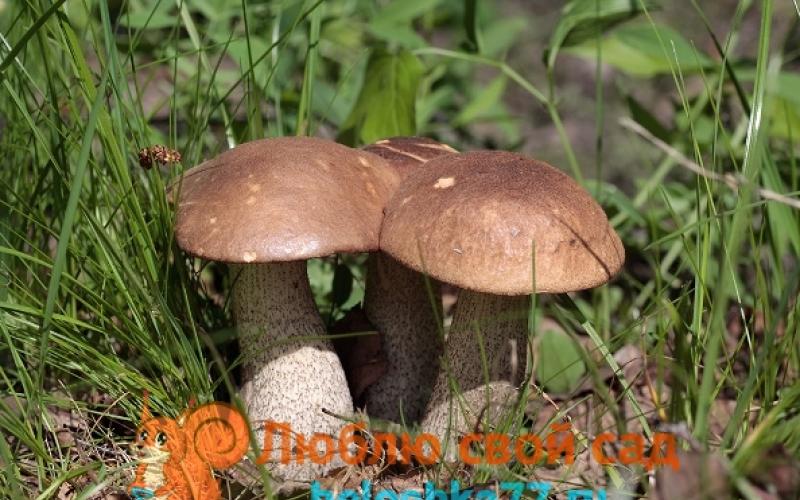Derzhiderevo (Paliurus aculeatus)- a shrub of the buckthorn family up to 3 m in height, dense, strongly branched, alternate leaves, located approximately in 2 rows on the branches, with short petioles, 2-4 cm long, 1.5-3.5 cm wide, wide, obovate, narrowed upward , with three veins slightly serrated or entire. Stipules are always changed into spines, one of which is erect and the other is curved backwards.
The flowers are bisexual, collected in small false umbrellas. Cup and whisk of 5 leaves, not fused, yellowish green colors. There are also 5 stamens, a pistil of carpels with a 2-3-cell semi-inferior ovary. The fruit is a hemispherical, lignified drupe with 2-3 seeds; the fruit is covered with a leathery semi-lignified, partly woolly disc, yellowish-brown in color, increasing the size of the fruit by 2-3 cm. Seeds are flat, obovate, not opening even after ripening. Blooms in May-July. Honey plant. Decorative.
Derzhiderevo is common in the Crimea, in the Caucasus (all regions), Central Asia. It grows on pebbles along the banks of rivers, in gorges, on dry clayey, gravelly and stony slopes, up to a height of 1500 m above sea level, often in thickets.
For therapeutic purposes, the roots, leaves, fruits, and bark of the tree are used.
Derzhiderevo contains saponins, alkaloids, flavonoids (rutin, hyperin, isoquercitrin), tannins, sucrose.
A decoction of the roots, leaves and fruits is used as a diuretic.
Decoction, infusion of bark and leaves are used for diarrhea, eye diseases. An infusion of seeds is drunk for pulmonary diseases.
AT traditional medicine In Bulgaria, the fruits of derzhidereva are used to "purify the blood" for eczema, as a laxative, against high blood pressure, etc. In high doses, it causes irritation of the digestive canal and kidneys.
The wood is suitable for tanning leather.
The unripe fruits of the derzhidereva dye silk, wool in pink and pink-lilac color, mature ones - in sandy.
Ways to prepare and use derzhiderev:
- 1 teaspoon of crushed roots of dergitree in 2 cups of water, boil for 5-6 minutes, leave for 1 hour, strain. Take 1 tablespoon 3-4 times daily as a diuretic.
- 1 tablespoon of crushed dry leaves in 2 cups of water, boil for 3-4 minutes, leave for 1 hour, strain. Take 1 tablespoon 3-4 times a day as a diuretic and for diarrhea.
- 0.5 teaspoon of crushed fruits per 300 ml of boiling water, leave for 2 hours, strain. Take 1 tablespoon 3-4 times daily as a diuretic.
- 1 tablespoon chopped bark in 2 cups boiling water, leave for 2 hours, strain. Take 1-2 tablespoons 3 times a day as an astringent for diarrhea.
Hold - tree (Christ's thorns, crown of thorns)
Hold - a tree, or a paliurus of Christ's thorn (Christ's thorns, a crown of thorns). Paliurus spina-christi. It is a deciduous shrub or small tree of the buckthorn family native to the Mediterranean. The plant is common in Southern Europe, Western and Central Asia, in the Crimea, in the Caucasus. In the Crimea, it grows on dry, well-lit rocky slopes, rising to mountains up to 1500 m.
According to legend, it was from this tree that the crown of thorns of Christ was woven - a crown of plant branches with thorns (thorns), which, according to the Gospels, was placed on the head of Jesus Christ by Roman soldiers during His desecration. In memory of this event, the scientific, as well as English-language "Christ's Thorn", or "Jerusalem Thorn" name of the plant is given.
The name itself speaks for itself. Small leaves sit on thin splayed branches; their stipules are turned into strong spines, arranged in twos - one straight, the other hooked. So, you won’t envy those who got into these thickets. This is how a bush looks like a tree. It is believed that a wreath of this plant was put on the head of Christ. The wreath, woven from the branches of a hold-tree, is decorated with the most delicate yellowish flowers, while on the inside it is dotted with the sharpest bidirectional thorns. Paliurus spina-christi spores were found on the shroud. Therefore, they call this shrub Christ's thorns. There are other names: karatyshnik, chizhnik, chizhmyk; among the Crimean Tatars - kara-teken.
The plant "hold-tree" is cultivated for decorative and medicinal purposes. When building landscapes, they are used as hedges. Does well in sandy and clay soils. Can grow in both strongly alkaline and acidic soils. Prefers open or slightly shaded (woodlands) areas. Grows in both well-drained and moist soil. Drought resistant.
The flowers of the tree are bisexual, collected in small false umbrellas. Calyx and corolla of five leaves, unfused, yellowish-green. There are also five stamens, a pistil of carpels with a two-three-celled semi-lower ovary. The fruit is a hemispherical lignified drupe with 2-3 seeds, the fruit is covered with a leathery, semi-lignified, partly woolly disc of yellowish-brown color, increasing the size of the fruit by 2-3 cm. Seeds are flat, obovate, not opening even after ripening. Blooms in May - July. Decorative. Honey plant.
Roots, leaves, fruits, bark are used for medicinal purposes. The plant contains saponins, alkaloids, flavonoids, tannins, sucrose. Fruits are used, the decoction of which has anti-inflammatory, expectorant and antispasmodic effects. It acts on the large intestine like a buckthorn laxative. In folk medicine, the fruits of the tree are used to "purify the blood", for eczema, as a laxative, against high blood pressure, etc. The juice of the fruit will help with cough and stone Bladder. The juice of the fruit removes with phlegm the bad juices that have accumulated in the chest, cleanses it and opens the breath. Helps with animal bites. A decoction or infusion of bark and leaves is used for diarrhea, eye diseases. An infusion of seeds is drunk for pulmonary diseases. In high doses, it causes irritation of the digestive tract and kidneys.
A decoction of the roots, leaves and fruits is used as a diuretic. 1 tsp crushed roots in 2 cups of water, boil for 5 minutes, leave for 1 hour, strain. Take 1 tbsp. 3-4 times a day as a diuretic. 1/2 teaspoon of crushed fruits per 300 ml of boiling water, leave for 2 hours, strain. Take 1 tbsp. 3-4 times a day as a diuretic.
A decoction or infusion of the bark and leaves is used for diarrhea: 1 tbsp. chopped bark in 2 cups boiling water, leave for 2 hours, strain. Take 1-2 tbsp. 3 times a day as an astringent for diarrhea. 1 tbsp crushed dry leaves in 2 cups of water, boil for 3-4 minutes, leave for 1 hour, strain. Take 1 tbsp. 3-4 times a day as a diuretic and for diarrhea.
The wood of the tree is suitable for tanning leather. Unripe fruits color silk, wool in pink and rose-lilac color, and mature ones in sand.
Hold-tree-thorny | Paliurus spina christi | Buckthorn. Botanical characteristics of hold-tree-thorny
This plant is also called prickly paliurus. It usually grows on stony soils in the western part of Asia and the Mediterranean countries, but is also found in the Caucasus.
It is a shrub with thorny branches and reaches a height of 2 to 5 meters. It has oval leaves with two stipules that have turned into spines at the base. In wet areas, the plant multiplies so strongly that it forms impenetrable thorny thickets.
Dry fruits with three seeds, surrounded by pterygoid folded appendages.
Hold on - the tree has large quantity thorns, which is why the population uses it to create hedges: they plant a plant around the perimeter instead of building a fence.
From ancient legend it came to us that during the crucifixion of Jesus Christ, a wreath of thorns was woven from the branches of a tree. But there are other authors who believe that this wreath was woven from African jujube (Ziziphus africana).
USED PARTS. Naturally dry fruits are usually harvested in the month of June and dried for a long time in the shade in the open air. After that, infusions and extracts used in the pharmaceutical industry are prepared from the dried fruits of the tree.
ACTIVE SUBSTANCES. The fruits of the plant contain a large number of flavonoids, mainly glucosyl luteolol, which gives the flowers their yellow color. It also contains rutoside.
HEALING PROPERTIES. Preparations made from the tree have a diuretic effect, and also contribute to the excretion of urea and other nitrogenous compounds along with urine.
PRECAUTIONARY MEASURES. To date, long-term testing of preparations of the tree-tree has not revealed any toxic effects on the human body at therapeutic doses, but they should not be used by pregnant women and nursing mothers.
APPLICATION.
1. , urinary tract infections:
- prepare the infusion: pour 30 grams of dried crushed fruits of the plant with a liter of boiling water, leave for 10 minutes. Consume 3-4 cups a day between meals;
- 30% hydroalcoholic extract: 30 drops in a small amount of water before meals three times a day.
If symptoms persist, a doctor should be consulted.
Be healthy!!!
P.S. Dear site visitors! You came to this page hoping to find healing for yourself, for a person close to you. Perhaps you have already found the right recipe.
But before you start cooking medicinal product with a plea, I recommend that you definitely read the prayers below, which it is advisable to rewrite and also read during the entire course of treatment. I sincerely assure you, it helps!
And may the Lord God help you
PRAYER FOR HEALING.
Lord Almighty, Physician of our souls and bodies, humble and exalt, punish and still heal! Visit your servant (name), who is weak, by Your mercy, stretch your muscle, full of healing and healing, and heal him, raise him from his bed and weakness. Forbid the spirit of infirmity, leave from it every ulcer, every disease, every fire and shaking, and if there is sin or lawlessness in it, weaken, leave, forgive Your for the sake of humanity. To her, Lord, spare Thy creation in Christ Jesus, our Lord, blessed be Thou with Him, and with the Most Holy, and Good, and Life-giving Your Spirit, now and ever and forever and ever. Amen.
Hold the tree is a shrub, the height of which can reach three meters. The leaves of this plant are alternate, they are arranged in two rows on branches with rather short petioles, the length of such leaves will be about two to four centimeters, and their width will be equal to one and a half to three and a half centimeters. Such leaves are broad and obovate, such leaves will taper upwards, they can be either serrated or entire. This plant has only two stipules, which look like thorns. The flowers of the tree are bisexual, they are collected in rather small false umbrellas. The corolla and cup of this plant consist of five leaves, which are painted in yellowish-green tones. There are only five stamens in this plant, the pistil consists of carpels endowed with a two-three-celled semi-lower ovary; The fruit of this plant is covered with a leathery and semi-lignified woolly disk, painted in yellowish-brown tones, which will increase the size of the fruit of the tree by two to three centimeters. The seeds are flat and obovate and will not open when ripe. The flowering of the hold-tree falls on the period from May to the month of July. It should be noted that this plant is not only decorative, but also a very valuable honey plant.
Under natural conditions, this plant can be found on the territory of the Crimea, Central Asia and all regions of the Caucasus. For growth, hold the tree prefers places along the pebbles along the banks of the rivers, and also the plant is found in gorges, on dry gravel, clay and rocky slopes up to one and a half thousand meters above sea level. It should be noted that most often this plant prefers to grow thickets.
Description of the healing properties of the hold-tree
Hold the tree is endowed with quite valuable healing properties, while it is recommended to use the bark, fruits, leaves and roots of this plant for therapeutic purposes. The presence of such valuable healing properties due to the content in the plant of alkaloids, saponins, tannins and sucrose, as well as the following flavonoids: hyperin, rutin and isoquercitrin.It is noteworthy that a decoction of the roots, fruits and leaves of this plant is used as a diuretic. A decoction and infusion of the leaves and bark of the tree is used for eye diseases and diarrhea. An infusion prepared on the basis of the seeds of this plant is recommended to drink for various pulmonary diseases.
As for traditional medicine, here the fruits of this plant are used as a laxative, as well as for eczema and against high blood pressure. It should be remembered that in high doses this plant can cause irritation of the kidneys and digestive tract. It is noteworthy that the wood of the hold-tree is very suitable for tanning leather. The immature fruits of this plant dye wool and silk pink, while the mature fruits are dyed green.
As a diuretic, it is recommended to take the following remedy based on the hold tree: to prepare such a remedy, you will need to take one teaspoon of crushed roots in two glasses of water. The resulting mixture should be boiled for five to six minutes, and then left to infuse for an hour, after which it is carefully filtered. Take this remedy one tablespoon three to four times a day.
Everyone wants to breed unusual plants. To grow a healthy plant in your greenhouse, it is important to find the subtleties of the content. In this collection, we intended to collect many articles in order to prevent death during the cultivation of a rare plant. A capricious plant requires a painstaking approach. The secrets of growing most types of flowers are different. We recommend that you clarify for the correct procedures which family the acquired plant belongs to.
medicinal plantsHoney plants of forests and parks - trees and shrubs
Hold-tree, or Christ's thorns, crown of thorns (Paliurus spina-christi) Fig.
Deciduous shrub or small tree of the Krushinovye family, with splayed branches, up to three meters high. The leaves are alternate, somewhat unequal, ovate, located on the branches in two rows and equipped with two spines (stipules) at the base of the petiole, one of which is straight and the other is bent down. The flowers are bisexual, collected in small false umbrellas. Calyx and corolla of five leaves, unfused, yellowish-green. There are also five stamens, a pistil of carpels with a two-three-celled semi-lower ovary. Gives a good bribe to bees in June-July.
In folk medicine, the fruits of the tree are used for eczema, as a laxative, against high blood pressure.
when using preparations of the tree, it is necessary to observe the dosage. Large doses cause irritation of the alimentary canal and kidneys.
Hold-a common tree
Paliurus spina-christi
paliurus christ's thorn
Description: dense prickly bush with winding branches, 100-250 cm tall. Leaves simple, entire, alternate, 2-4 cm long, obovate, unequal, with three veins; stipules are modified into spines, one of which is erect, and the second is bent back. Flowers 5-petalled, yellowish-greenish, 3-4 mm in diameter, collected in small umbellate inflorescences. Fruit - dry, indehiscent, surrounded by a wing, 1.3-2.8 cm in diameter, bright yellow or red-brown. Blooms in May - June.
Distribution: found in the Caucasus; in Ukraine - in the Mountainous and Southern Crimea. Grows on dry slopes. Cultivated as an ornamental plant, used in hedges.
Part Used: Ripe fruits containing alkaloids and tannins, also found in leaves vitamin C(up to 176 mg%).
Collection and harvesting: the fruits are dried under a canopy on the street or in well-ventilated areas. The yield of dry raw materials is 50%. Store raw materials in a dry place.
In the wild, it grows along river banks, along dry rocky slopes, in gorges, at an altitude of up to 1,500 m above sea level.
Description
Shrubs or small trees up to 3-4 meters high, sometimes forming impenetrable thickets, which, apparently, gave the plant its Russian name.
Shoots are zigzag. with alternate leaves and two spines. one of which is straight, and the second is curved back.
The leaves are alternate, obovate, entire or finely serrate, narrowed at the apex, shiny green, 2-5 cm long and 1-4 cm wide.
The flowers are bisexual, very small, collected in false umbrellas. Petals are yellowish-green, not fused, five in number. There are also five stamens. Pistil of carpels with a two-three-celled semi-inferior ovary. Flowering in July-August.
The fruit is a hemispherical lignified drupe 2-3.5 cm in diameter, covered with a yellowish-brown woolly disc; contains 2-3 flat, obovate seeds. Fruiting in October - December.
Usage
The plant is cultivated for decorative and medicinal purposes. When building landscapes, they are used as hedges. Does well in sandy and clay soils. Can grow in both strongly alkaline and acidic soils. Prefers open or slightly shaded (woodlands) areas. Grows like a well-drained. as well as in wet soil. Drought resistant.
As a medicine, fruits are used, the decoction of which gives anti-inflammatory, expectorant and antispasmodic effects.








